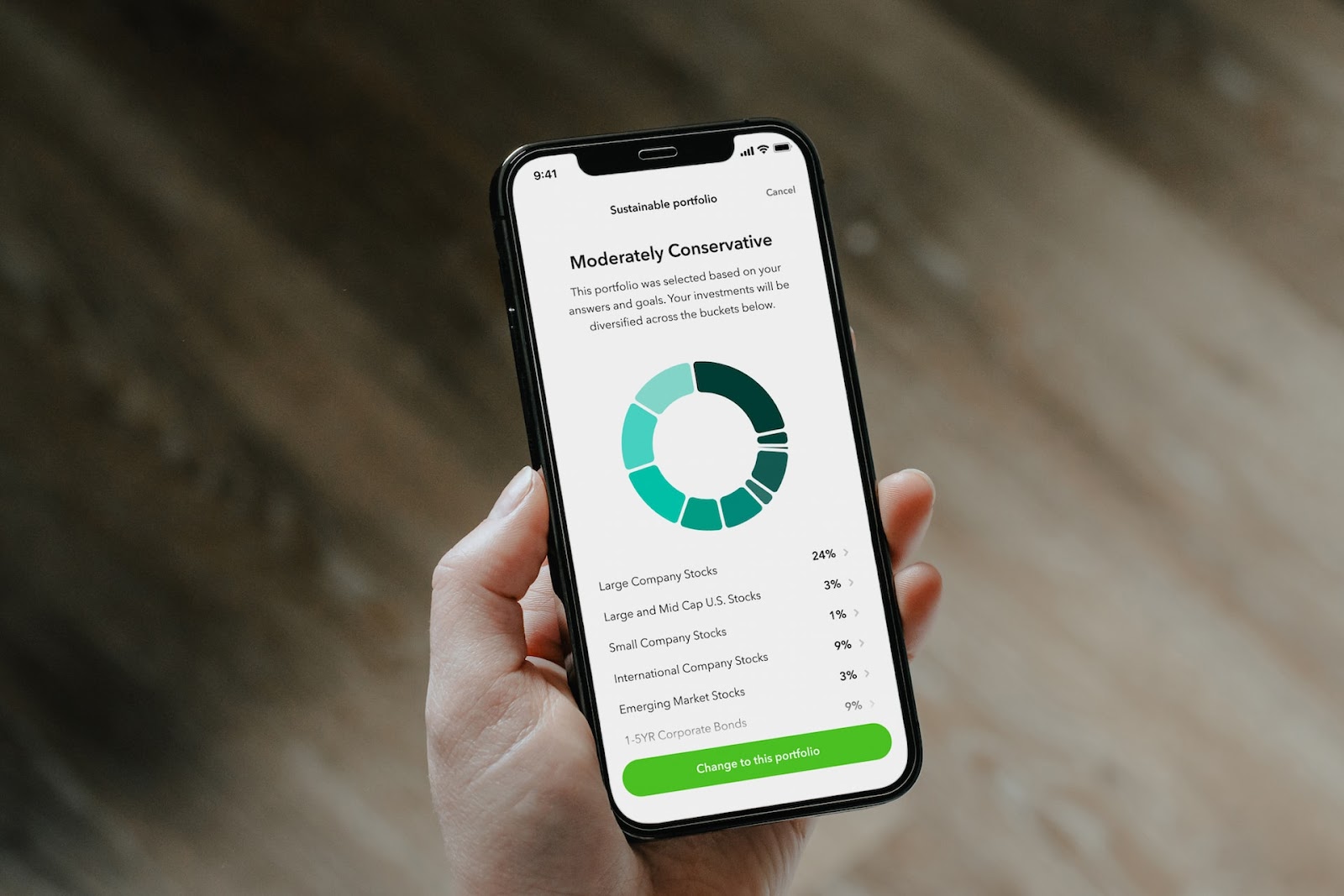Easy to Use – Profit Margin Calculator

Are you struggling to keep track of your company’s finances? Calculating your profit margins accurately is critical to understanding how your business is performing.
This article will provide you with a simple and straightforward guide on how to use a profit margin calculator. So, get ready to unlock the power of increased financial insight!
How to Calculate Profit Margin
Profit margin is an important metric for any business to understand. It’s a way to measure the success and sustainability of a business over time. Knowing the basics of calculating profit margins can help businesses make more informed decisions about their production or investment strategies, and make more money in the process.
At its core, profit margin is simply the amount of money left over after subtracting all expenses from total revenue. To calculate it, you divide your net income — which is your total revenue minus all operating costs — by your total revenue. Here’s how it works:
Total Revenue – Operating Costs = Net Income Net Income ÷ Total Revenue = Profit Margin
The result is expressed as a percentage, which tells you your company’s profit margin at a given point in time. This number can be used to benchmark performance over time or compare how two companies perform against one another. Additionally, monitoring changes in profit margins can also help establish trends that may be things like seasonal discrepancies between departments or products.
How to Calculate Margin
Profit margin is a metric used to measure the profitability of a business. It expresses the amount by which revenue generated by a company exceeds its expenses. Calculating profit margin gives you an insight into your business’s financial health and helps you forecast future profits and costs. Following are some simple steps for calculating profit margin:
Step 1: Determine Your Revenue
The first step in calculating your profit margin is determining your revenue, which is usually expressed as total revenue or gross income. This figure can be determined by adding up all of your sales income before any deductions are taken out.
Step 2: Subtract Your Operating Expenses
Operating expenses include costs such as material costs, staffing costs, utility bills, rent and other miscellaneous expenses that are necessary for the running of your business’ day-to-day operations. Subtract all these operating expense totals from your overall revenues to reach an approximate number representing gross profits or gross income less operating expense (GILOE).
Step 3: Analyze Profit Margin
Profit margin can be expressed in two ways – either as a percentage of your total revenues or as a dollar amount represented in total net profits or net income (NI). To calculate the percentage rate of return on sales, simply divide GILOE by total revenues. To calculate NI divide GILOE by 1 minus obligatory taxes (e.g., social insurance contributions, corporate tax etc.). Note that NI may be referred to as “net earnings” or “net profit”.

Margin Formula
The formula for margin is calculated by subtracting the cost of goods sold (COGS) from the revenue, and dividing this number by revenue. Margin is then expressed as a percentage. This calculation can provide meaningful insight into a company’s profitability and how effective it is at managing its costs.
For example, if a company has a $100 of revenue and $60 of cost of goods sold, its margin would be (100-60)/100 = 40%. This means that out of the total revenue generated, $40 went to the gross profit. To determine if the result is favorable, compare it with previous years or with other companies in the same industry. Understanding a business’s margin will help you make informed decisions about it.
It’s also important to keep in mind that margins can vary greatly depending on different factors such as seasonality, sales levels, costs associated with production etc., so keeping up to date on these variables can impact your assessment.
Calculate Margin
Knowing your business’s profit margin gives you insight into profitability and helps you make more informed decision regarding pricing, spending, and investments. Calculating the profit margin is a straightforward process that requires basic knowledge of accounting fundamentals.
The calculation of a company’s profit margin involves two steps:
1.Calculate the amount of gross profit a company earns from its sales. This is determined by subtracting the cost associated with making goods or providing services from total revenue generated from those goods or services.
2.Divide the gross profit by total revenue to get the company’s gross profit margin expressed as a percentage of sales. This will give you an idea of how profitable a business is and what portion of each dollar in revenue is translating into profits for the company.
By understanding your margins, it allows you to better manage expenses and anticipate changes in future demand for your goods or services. Additionally, having accurate information about your margins can be beneficial when assessing performance against competitors and negotiating with suppliers to improve efficiency so that higher profits can be achieved in the long run. Therefore, understanding the process involved in calculating your business’s margin through an easy-to-use formula such as our Profit Margin Calculator will serve as an incredibly valuable tool for entrepreneurs wanting to monitor their company’s bottom line profitability while also staying competitive in their industry.

Calculate Profit Margin
Profit margin is often referred to as the ‘bottom line’ of a business. It is an important figure to monitor and calculate as it lets you see how much money your business keeps out of all the income generated. There are different approaches to calculating the profit margin and each has its own advantages and drawbacks. In general, there are two main ways to measure a company’s profit margin.
The first approach looks at the total amount of money made from sales and subtracts out any costs associated with making or providing that product or service—then divides it by total revenues. This gives you a gross profit or ‘mark-up percentage’ which shows how much profit you have made without taking into consideration any of your operating expenses such as rent, utilities, payroll costs, etc.
The second method subtracts not only costs related to creating and providing your product or service from total revenues but all associated operating expenses as well including, rent, payroll costs, legal fees etc., leaving only the cumulative net profits at the end of each period (monthly/quarterly/annually).
To make it easier for businesses to quickly calculate their bottom line profits in relation to their total revenue stream over time a Profit Margin Calculator can help to automate this process and save time (and potentially money) for entrepreneurs who don’t have access to expensive accounting software packages or don’t have expertise in accounting fundamentals. This calculator uses predetermined coefficients for each category in order to arrive at an optimal gross/net margin that businesses can use when planning their future operations and budgeting for new initiatives including cost savings ideas.
Margin Calculation
Profit margin is an important metric to calculate and track for any business, regardless of its size or industry. In essence, profit margin is the amount of money left over after subtracting all expenses from the total revenue and it can be used to get a better understanding of the financial condition of a business.

To assist with quickly and accurately calculating margins, there are several online tools available such as an easy-to-use Profit Margin Calculator. It generates real-time results of your net profit margin percentage by inputting revenue, cost and expenses into its interface.
In addition to this, with the calculator you can:
- Calculate Gross Profit Margin which measures profitability before deducting overhead costs
- Input different scenarios to see how changes in costs will affect your profit
- Compare historical results or different time periods against each other
- Generate detailed reports for ongoing analysis over time
Cost Margin
Cost margin, or gross margin, is a key performance measure in business that represents a company’s amount of profit earned from its total sales. To calculate cost margin, input your total revenue and total cost figures into the calculator below. You will then see an indication of your profit or loss on the bottom line.
Cost margin is often used as an indicator of overall profitability and performance of a company. It can help owners and investors quickly understand how much money their business is making at any given time, so long-term decisions can be made with confidence.

The calculator can also be used to compare two companies within the same industry to identify which one is achieving greater success with their operations processes, supply chain management and customer relationships. This comparison can provide helpful insight on the direction operations should take in order to remain competitive and profitable over time.
Calculating Margin
Calculating the profit margin of your business helps you to identify profitable areas, as well as areas in need of improvement. Generally, higher profit margins indicate a healthier business, but many factors can affect a company’s profitability. In order to calculate the margin accurately, it is important to understand all associated expenses and revenues separately.
The formula for calculating the profit margin is quite simple: subtract all expenses from total revenue, divide this amount by total revenue and multiply by 100. This will give you a percentage that represents the sales income left after all expenses have been deducted. For instance, if your total revenue is $200 and your total expenses are $150, your calculation will be (200-150)/200 x 100 = 25%. This indicates that you have earned a 25% profit margin on those sales.
Profit margin calculators can be used for both short-term measurements or long-term trends analysis depending on how often the figures are updated. If this data is collected over time then average margins can provide vital information about overall business productivity; if current values are used it may help smaller companies to decide whether or not to accept certain projects and invest more resources into them.
How to Calculate Percentage Margin
Calculating your profit margin is one of the most important steps in business decision-making. It helps you determine the amount of money that you can put back into your business in order to grow. By understanding how to calculate Percentage Margin (also known as Gross margin or Gross profit margin) you can accurately assess your businesses profitability and decide how best to reinvest your profits.
The formula for calculating Percentage Margin or Profit Margin is quite simple. The formula for Profit Margin is: Net Profit/ Total Revenue x 100 = Profit Margin (%). In this formula, net profit refers to the gross profit after all costs have been taken into account, such as labour, materials and overhead. Whereas total revenue refers to the amount of money that a business has generated after selling their product or services.
To calculate your gross margin, start by deciding what costs should be included when creating your net profit figure. These should include all direct costs incurred during production and sale of goods and services such as raw materials, labour costs and overhead expenses on rent, heat, light etc,. Subtract these costs from the total revenue figure generated by sales during period in question to create a Net Profit figure. Divide this figure by total revenue to get a decimal figure (eg 0.085). Then multiply this decimal figure by 100 to find percentage margin or gross profit percentage (eg 8.5%). This calculator allows users with even basic cost accounting knowledge quickly obtain an accurate measure of their current merchandising performance.
To use it, simply enter values for sales revenues and relevant cost figures for all relevant items involved in generating the sales revenue:
Once the calculation has been completed you will have an accurate measure of how much profit can be generated from each sale which will help you decide where best money should be reinvested in order advance growth opportunities within your business.
How to Find The Margin
Determining your profit margin can help you make more strategic decisions about your business. It is an important metric that measures how efficient a company is in terms of its pricing, cost structure and operations. Finding the margin requires simple calculations and understanding of the three essential elements – revenue, cost of goods sold (COGS) and gross profit.
In order to calculate the margin, you must have a clear understanding of these three key figures:
1. Revenue – This refers to all income a business earns through sales of goods or services before any costs or expenses are subtracted.
2. Cost of Goods Sold (COGS) – COGS covers the costs associated with creating or acquiring inventory that is sold to customers. This includes direct material costs, labor costs and overhead allocated to making each unit sold.
3. Gross Profit – After subtracting COGS from revenue, the resulting figure is gross profit, which indicates how much money remains after all tangible costs have been paid for in sales transactions before any other expenses are factored in such as marketing or overhead.
To find your margin percent by using the formula below: Margin % = (Gross Profit / Revenue) x 100 This percentage will help you understand if your current pricing strategy works for long-term profitability goals depending on whether it is higher or lower than industry averages. Knowing this information can enable more informed decision-making when it comes to setting prices and evaluating suppliers or cost savings opportunities as well as administrative efficiency among many other factors that contribute to overall business performance.
Omnimargin
OmniMargin is a powerful yet easy to use profit margin calculator that lets you calculate your business’s profit marging quickly and accurately. It’s perfect for small business owners, entrepreneurs and finance professionals who want to make sure that their company is profitable. The tool can crunch the numbers for any period of time so you can get up-to-date information about how much you’re earning.
To get started with OmniMargin, all you have to do is provide your company’s financial data such as cost of goods sold (COGS), revenue and expenses. The calculator will automatically calculate your gross margins as well as other important business metrics such as turnover rate, breakeven analysis and total operating expenses ratio. This helps you quickly identify areas where expenses need to be cut or products are not selling well. Plus, OmniMargin includes a multitude of customizabile reports that help you easily track various KPIs over any length of time.
You can also use OmniMargin to forecast future profits by plugging in expected changes in costs/expenses or sales/revenue projections into the tool which provides a clear picture into what your profits may look like in the future. You can also create budget scenarios to examine “what if” questions revolving around changes in profit margins. With this information at hand, businesses are able to make informed decisions about how to best invest or save their money for maximum profitability.
-
Quotes1 year ago
30 Inspirational Thoughts For The Day
-
Self Improvement1 year ago
7 Tips To Recreate Your Life In 3 Months And Change Your Destiny
-
Motivation1 year ago
5 Excellent Ways To Stay Focused On Your Dreams
-
Quotes1 year ago
21 Quotes About Chasing Perfection And Striving For It
-
Health1 year ago
4 CBD Products Your Dog Deserves To Have
-
Personal Finance2 months ago
How Do I Find My UCAS ID Number?
-
Entrepreneurs1 year ago
1Password Evaluation – The Highest Ranked Password Manager Out There
-
Entrepreneurs2 years ago
51 Lucrative Ways to Make Money From Home


























